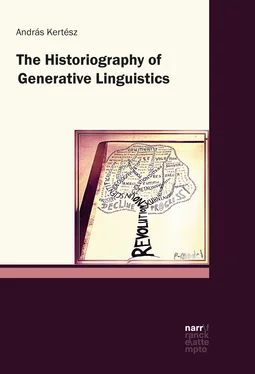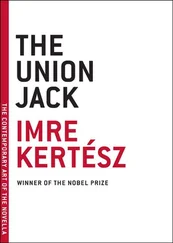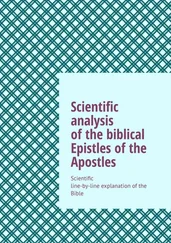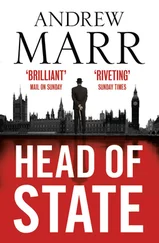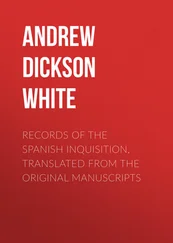1 ...8 9 10 12 13 14 ...23 According to SeurenSeuren, Pieter A.M., in the course of his metatheoretically oriented activity, ChomskyChomsky, Noam suggested a host of general principles and constraints. However, the analysis of the datadata was carried out by others, who regularly found that Chomsky’s suggestions did not work (Seuren 1998: 252, footnote 27).
SeurenSeuren, Pieter A.M.’s (1998) approach focuses on the close interplay between aspects of the historiographyhistoriography of linguistics and those of the philosophy of sciencephilosophy of science. Nevertheless, he does not specify the details of the metascientificmetascientific background assumptions he takes for granted as his point of departure.1 Seuren’s (1998) solution to the problem (P) can be reconstructed as follows:
| (SP9) |
The basic term of the historiographyhistoriography of generative linguistics with respect to Syntactic Structures Syntactic Structures is ›metatheory‹metatheory, its central thesis is (T9) and its framework is the association of historiography with the perspective of the philosophy of science.philosophy of science |
2.1.2.6 Rhetoric
2.1.2.6.1 Revolutionary rhetoricrhetoric and coupcoup
According to one of the most spectacular stances, ChomskyChomsky, Noam’s appearance did not set off a revolution; rather, Chomsky and his ›militant group‹ of linguists carried out a palace coupcoup in order to gain power (AnttilaAnttila, Raimo 1975: 171; GrayGray, Bennison 1976: 49; MurrayMurray, Stephen O. 1980, 1989, 1994, 1999a, b). It was Stephen O. Murray who elaborated this stance very thoroughly and clearly over several decades of systematic datadata collection. He claims:
| (T10) |
After the publication of Syntactic Structures Syntactic Structures , ChomskyChomsky, Noam and his ›militant group‹ did not set off a scientificscientific revolution,evolutionscientificrevolutionscientific but rather, carried out a ›palace coup‹coup followed by revolutionaryrevolutionary rhetoric.rhetoric |
We will illustrate (T10) by discussing MurrayMurray, Stephen O.’s arguments in a relatively detailed way.
In order to understand them properly, we need to briefly summarize his historiographicalhistoriography framework. MurrayMurray, Stephen O. adapts a sociologicalsocial approach to the historiography of linguistics which is, on the one hand, based on a significant modification of KuhnKuhn, Thomas S.’s theorytheory, and on the other hand, on the direct application of the sociological framework of GriffithGriffith, Belver and MullinsMullins, Nicholas C. (1972) and Griffith and MillerMiller, A.J. (1970). Murray assumes two complementary models within his theory: the ›functionalist‹ model and the ›conflict‹ model.
The central claim of the functionalist modelmodelfunctionalist identifies the prerequisites of the formation of scientificscientific groups (MurrayMurray, Stephen O. 1994: 22–23). There are three essential conditions for the formation of a coherent scientific group:
good ideas
intellectual leadership
organizational leadership.
In MurrayMurray, Stephen O.’s view, it is obvious that all three prerequisites are met in the historyhistory of generative linguistics. Although good ideas can be detected in Syntactic Structures Syntactic Structures , they were not sufficient in themselves to bring about significant changes in the field. Murray stresses that the latter are never brought about by solitary scholars, but always by well-organized groups, the formation and maintenance of which depends on two sociologicalsocial factors: there is a need for intellectual and organizational leadership. In the case of generative linguistics, the intellectual leader was, of course, ChomskyChomsky, Noam and the organizational leader was, besides Chomsky, Morris HalleHalle, Morris in the 1950s and 1960s.
In the functional model the prerequisites of group formation apply equally to every scientificscientific group. However, the conflict modelmodelconflict differentiates between two types of groups. It takes into consideration those factors on the basis of which the group decides whether it chooses revolutionaryrevolutionary rhetoricrhetoric or a discourse style that emphasizes continuitycontinuity with a preceding group (MurrayMurray, Stephen O. 1994: 23–25). Murray’s starting point in this respect is the assumption that there is always intellectual continuity between the consecutive ›paradigmsparadigm‹. Therefore, the term ›revolution‹ does not apply to innovations with respect to content, new scientific findings, methods, or theses, but is narrowed down exclusively to rhetoric, in the sense that the terminology of the given group stresses the revolutionary nature of innovations as opposed to their continuity. Thus, in this respect, »the notion of scientific revolutionrevolutionscientific has been relativized here to consideration of ›revolutionary rhetoric‹« (Murray 1994: 23).
According to the conflict modelmodelconflict, the distinction between the above-mentioned two types of rhetoricrhetoric is subject to three factors:
The group members have to belong to the ›elite‹, which, according to the American hierarchy, means training at one of the five most prestigious universities.
They have to perceive themselves as being suppressed. In this respect, what is important is their perception that their access to recognition – i.e. getting access to publications, positions, funding etc. – is blocked, and not whether it really is so.
They have to belong to a younger generation than those scholars who hold academic positions i.e. primarily those who are responsible for publications platforms and funding resources.
As long as these conditions are met, the group rhetoricrhetoric is revolutionaryrevolutionary; if not, it emphasizes continuitycontinuity. The first condition was obviously met in the case of ChomskyChomsky, Noam and his group. As regards the second, MurrayMurray, Stephen O. shows, through detailed analyses, that the Chomskyan camp’s legendarily aggressive attacks against neo-Bloomfieldianneo-BloomfieldianBloomfieldian linguists were motivated by this perceived blocked access to recognition (Murray 1994: 225–248). The generation gap that has been mentioned as the third condition was clearly present between early generative linguists and neo-Bloomfieldians (but, as is shown below, in a completely different way from what the KuhnianKuhnian approach would suggest). It follows from this that Murray may see Chomsky’s and his circle’s activity not as a ›real‹ revolution but as revolutionary rhetoric , which manifests itself only in its use of terminology.
MurrayMurray, Stephen O.’s analysis of the historyhistory of generative linguistics in the framework of the functionalist and the conflict modelmodelconflict supports (T10) in the following way.1
First, the generativists’ rhetoricrhetoric of revolution – in contrast to NewmeyerNewmeyer, Frederick J.’s (1986b) view discussed above – was not associated with revolutionaryrevolutionary innovations either intellectually or methodologically. MurrayMurray, Stephen O. argues that there is a crystal clear continuitycontinuity between the content of Syntactic Structures Syntactic Structures and neo-Bloomfieldianneo-BloomfieldianBloomfieldian structuralismstructuralism. Therefore, at the level of the content of the theorytheory, we cannot assume a ›real‹ revolution.2 Thus, Syntactic Structures did not contain significant scientificscientific innovations; the appearance of ChomskyChomsky, Noam and his circle can only be described through the exploration of sociologicalsocial factors surfacing at the level of rhetoric. Murray ironically remarks:
Читать дальше
